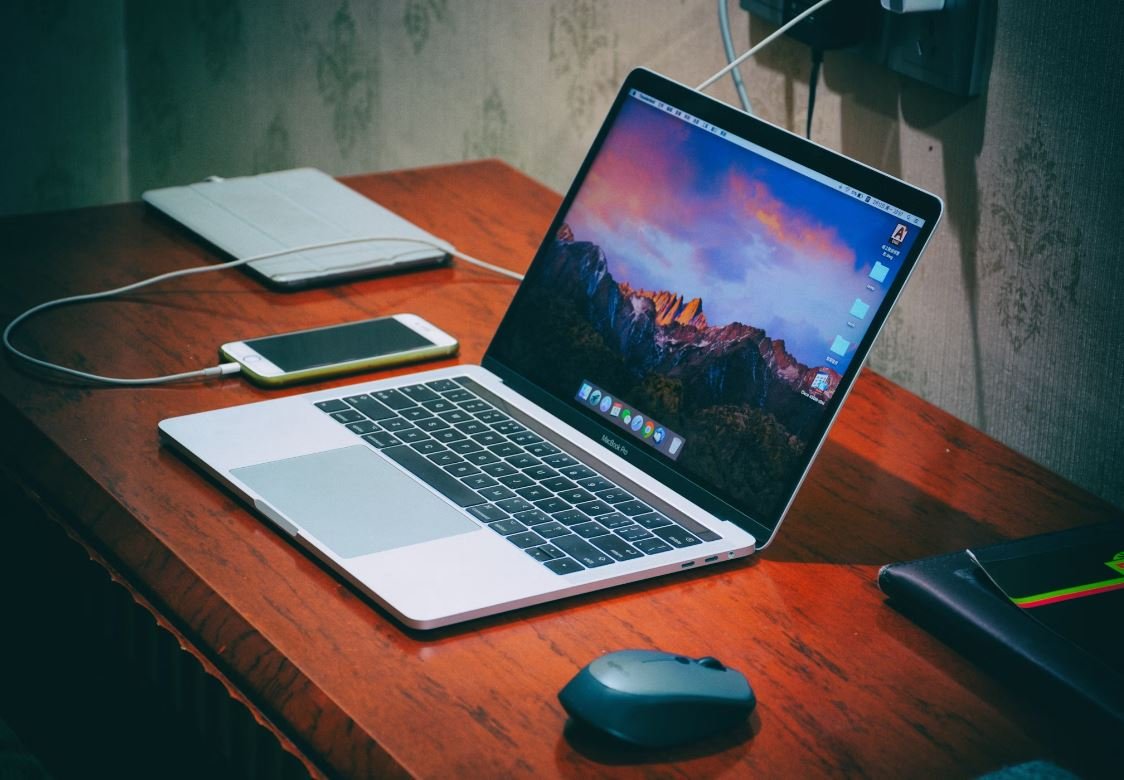How to Record a Podcast
Recording a podcast can be an exciting way to share your thoughts, ideas, and expertise with a wide audience. Whether you’re a beginner or an experienced podcaster, this article will guide you through the process of recording a podcast from start to finish.
Key Takeaways:
- Choose a suitable location for recording.
- Invest in good quality recording equipment.
- Outline your podcast structure before recording.
- Record and edit your podcast using professional software.
- Promote and distribute your podcast to reach a wider audience.
To begin with, find a quiet and dedicated space in your home or office to record your podcast. This will ensure minimal background noise and distractions, allowing your listeners to focus on the content. Ensure the room has good acoustics and consider using soundproofing materials if necessary.
Did you know that choosing the right location for recording can greatly impact the overall sound quality of your podcast?
Investing in good quality recording equipment is essential for producing a professional-sounding podcast. Consider purchasing a USB or XLR microphone, headphones, and a pop filter to minimize unwanted sounds. Additionally, a microphone arm or stand can help ensure proper microphone positioning and reduce handling noise.
Did you know that using a pop filter can greatly improve the clarity of your podcast audio by reducing plosive sounds?
Recording Software and Editing:
Once you have your equipment ready, it’s time to choose a recording and editing software. There are a variety of options available, both free and paid, such as Audacity, GarageBand, and Adobe Audition. Experiment with different software and find one that meets your needs and preferences.
| Software | Features |
|---|---|
| Audacity | Free, open-source software with basic editing capabilities. |
| GarageBand | Mac-only software with intuitive interface and advanced editing options. |
| Adobe Audition | Premium software offering professional-level editing features and effects. |
Did you know that Adobe Audition is widely used in the podcast industry for its advanced editing and post-production capabilities?
Before you start recording, create an outline or script for your podcast. This will help keep your thoughts organized and ensure a smooth flow of conversation. Consider including an introduction, main topics, and potential interview questions. Flexibility is important, but having a structure in place will prevent any meandering or excessive tangents.
During the recording process, be sure to speak clearly and at a consistent volume. Take short breaks when needed and eliminate any background noise during post-production. It’s also helpful to create a comfortable atmosphere for your guests or co-hosts to ensure smooth conversations.
Did you know that adding background music or sound effects can enhance the overall listening experience of your podcast?
Promoting and Distributing:
Once your podcast is recorded and edited, it’s time to promote and distribute it to reach a wider audience. Create eye-catching cover art and compelling episode descriptions. Submit your podcast to popular directories such as Apple Podcasts, Spotify, and Google Podcasts. Leverage your social media platforms to announce new episodes and engage with your audience.
- Design captivating cover art for your podcast.
- Create engaging episode descriptions.
- Submit your podcast to popular directories.
- Promote your podcast on social media.
Did you know that utilizing social media platforms can significantly increase the visibility of your podcast?
In conclusion, recording a podcast requires careful planning, quality equipment, and attention to detail. By following the steps outlined in this article, you can create an engaging podcast that captivates your audience and leaves a lasting impact.

Common Misconceptions
Podcasting Requires Expensive Equipment
- You need a high-end microphone to produce a quality podcast
- Investing in an expensive mixing board is essential for professional sound
- Only professional studios can deliver a polished podcast
Scripting Every Word is Necessary
- Scripts lead to robotic and unnatural delivery
- Podcasters cannot express themselves authentically without a script
- Podcasting should sound completely spontaneous, without any preparation
You Need a Large Audience to Be Successful
- Podcasts are only valuable if you have thousands of listeners
- Small audience numbers indicate failure
- Monetization and sponsorship opportunities are only available for podcasts with huge followings
All Podcasts Are Profitable
- Podcasts are an easy way to make money
- Advertising revenue will start pouring in quickly
- Every podcast can generate income through sponsorships
Technical Knowledge is a Must
- Only tech-savvy people can produce and edit podcasts
- You need extensive audio engineering knowledge to create a podcast
- Podcasting requires advanced knowledge of various recording software

Introduction
Recording a podcast requires careful planning and attention to detail. From selecting the right equipment to editing the final product, every step of the process contributes to the success of your podcast. In this article, we present 10 interesting tables that provide valuable insights and data to guide you through the podcast recording journey.
Table 1: Popular Podcast Genres
Understanding the different genres of podcasts can help you choose a niche or target audience. Here are some popular podcast genres:
| Comedy | True Crime | News & Politics |
|————-|————-|—————–|
| Technology | Education | Society & Culture |
| Business | Health | Sports |
Table 2: Essential Podcast Equipment
To ensure high-quality podcast recordings, investing in the right equipment is crucial. Here are some essential items:
| Microphone | Pop filter | Headphones |
|————–|—————–|—————–|
| Audio Mixer | Soundproofing | Boom Arm |
| Recording Software | Shock Mount | Audio Interface |
Table 3: Top Podcast Hosting Platforms
Choosing a reliable podcast hosting platform is essential for distributing your episodes effectively. Consider these top platforms:
| Spotify | Apple Podcasts | Google Podcasts |
|————–|—————-|—————–|
| Podbean | Anchor | Castbox |
| Stitcher | Overcast | SoundCloud |
Table 4: Steps for Planning a Podcast
A well-planned podcast ensures a smooth recording experience. Follow these steps:
| Determine Your Topic | Research and Outline | Guest Selection |
|———————-|———————-|—————–|
| Script Writing | Show Format Design | Episode Planning |
| Scheduling | Equipment Setup | Pre-Recording Prep |
Table 5: Recommended Podcast Episode Length
Episode length can impact listener engagement. Consider these guidelines:
| 20 minutes or less | 20-40 minutes | 40-60 minutes |
|———————–|——————-|——————-|
| Quick and focused | In-depth content | Long-form storytelling |
| Ideal for interviews | Wider topic range | Engages dedicated listeners |
Table 6: Podcast Editing Software Comparison
Editing your podcast ensures a polished final product. Compare these popular editing software options:
| Adobe Audition | GarageBand | Audacity |
|—————–|—————–|————|
| Hindenburg | Logic Pro X | Reaper |
| Pro Tools | Cubase | SoundForge |
Table 7: Tips for Engaging Podcast Introductions
The introduction of your podcast sets the tone for the entire episode. Apply these tips:
| Start with a Hook | Clearly State the Topic | Engage with Anecdotes |
|———————|————————-|———————–|
| Showcase Your Style | Include a Teaser | Keep it Concise |
| Establish Credibility | Use Music or Sound Effects | Inspire Curiosity |
Table 8: Podcast Promotion Channels
Promoting your podcast is crucial for gaining visibility and attracting listeners. Consider these channels:
| Social Media Platforms | Podcast Directories | Cross-Promotion |
|———————–|—————————|———————–|
| Email Marketing | Guest Appearances | Influencer Collaborations |
| Advertising | Online Communities | Live Events |
Table 9: Podcast Listener Demographics
Understanding your target audience can help tailor content and improve engagement. Here are some listener demographics:
| Age Group | Gender | Education Level |
|—————|————-|—————–|
| 18-24 | Male | High School |
| 25-34 | Female | Bachelor’s |
| 35-44 | Non-Binary | Master’s |
Table 10: Benefits of Recording a Podcast
Recording a podcast offers numerous advantages beyond simply expressing your thoughts. Consider these benefits:
| Build Authority | Expand Your Network | Develop Communication Skills |
|————————|———————-|——————————|
| Share Valuable Insights | Enhance Brand Visibility | Influence and Inspire Others |
Conclusion
Recording a podcast involves careful planning, selecting the right equipment, and engaging your target audience. By following the steps outlined in this article and leveraging the insights from the tables, you can create a successful podcast that resonates with your listeners. Remember, podcasting is not just about sharing your voice; it’s about building connections and leaving a lasting impact.
Frequently Asked Questions
1. How can I choose a catchy podcast title?
Choosing a catchy podcast title is important to attract listeners. You can brainstorm keywords related to your podcast’s content, consider using puns or alliterations, and ensure that it accurately represents your content while being memorable.
2. What equipment do I need to record a podcast?
To record a podcast, you will typically need a good quality microphone, headphones, a computer, and audio recording software. Additionally, you may want to have soundproofing materials or a quiet environment to ensure high-quality audio.
3. Which software can I use to record a podcast?
There are various software options available for podcast recording, such as Audacity, GarageBand, Adobe Audition, and Hindenburg Journalist. Choose the software that suits your needs and is compatible with your operating system.
4. How do I prepare for a podcast recording session?
Preparing for a podcast recording session involves researching your topic, creating an outline or script, setting up your recording equipment, and ensuring a quiet and comfortable recording space. It’s also a good idea to do some vocal warm-ups before starting.
5. What tips can you provide for improving podcast audio quality?
To improve podcast audio quality, consider using a high-quality microphone, using a pop filter to reduce plosive sounds, maintaining an appropriate distance from the microphone, and utilizing soundproofing materials or recording in a quiet environment. Additionally, editing the audio and removing background noise can enhance the overall quality.
6. How long should my podcast episodes be?
The ideal length for podcast episodes varies depending on your content and target audience. Generally, episodes between 20 to 60 minutes are popular. However, it’s important to focus on providing valuable content rather than adhering strictly to a specific length.
7. Should I script my podcast or use improvisation?
Whether to script your podcast or use improvisation depends on your preferences and the nature of your content. Scripting can provide structure and ensure clarity, while improvisation can create a more spontaneous and natural flow. Finding a balance between these approaches can work well for many podcasters.
8. How can I promote my podcast effectively?
To promote your podcast effectively, consider creating a dedicated website or blog, sharing episodes on social media platforms, engaging with your audience through email newsletters or forums, collaborating with other podcasters or influencers, and leveraging SEO techniques to improve discoverability.
9. What are some common podcast recording mistakes to avoid?
Some common podcast recording mistakes to avoid include inconsistent audio quality, excessive background noise, poor microphone technique, lack of preparation, overly long episodes without relevant content, and neglecting effective marketing and promotion strategies.
10. How do I submit my podcast to various platforms?
To submit your podcast to various platforms, you typically need to create an account on each platform (e.g., Apple Podcasts, Spotify, Google Podcasts), provide the necessary information (title, description, artwork), and upload your podcast episodes according to the platform’s guidelines. Each platform may have its own submission process, so it’s advisable to research and follow their specific instructions.


Leave a Reply